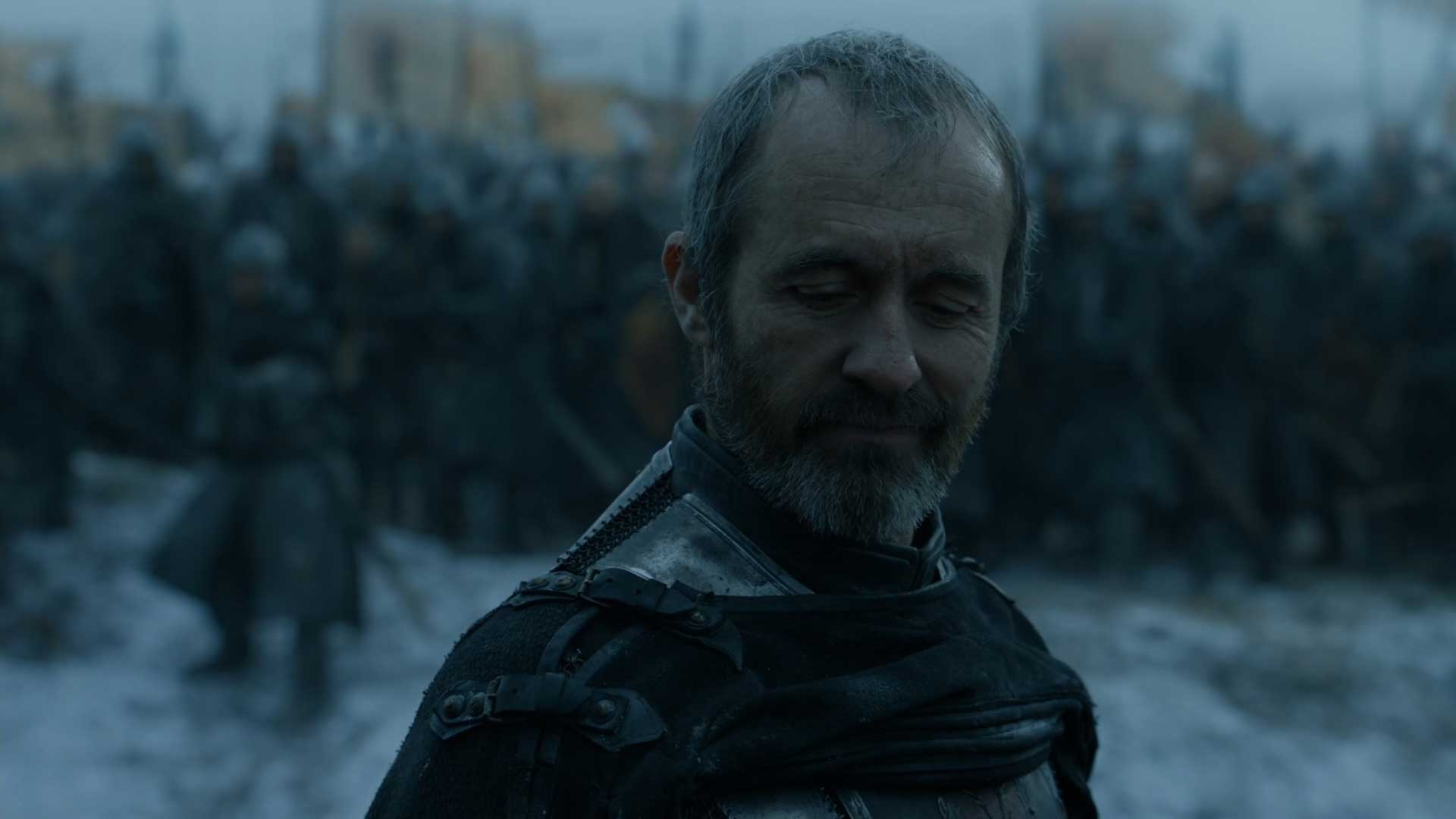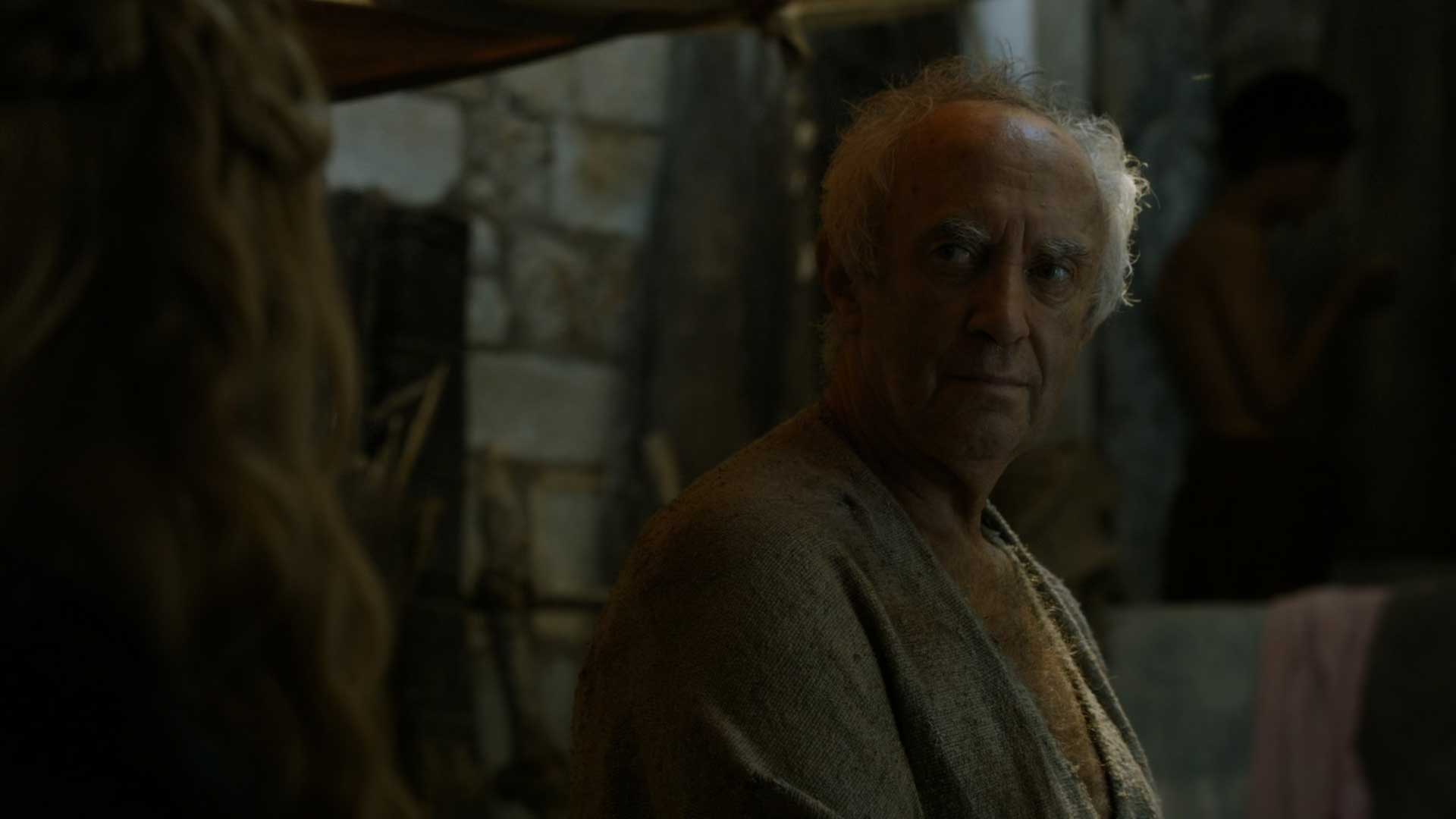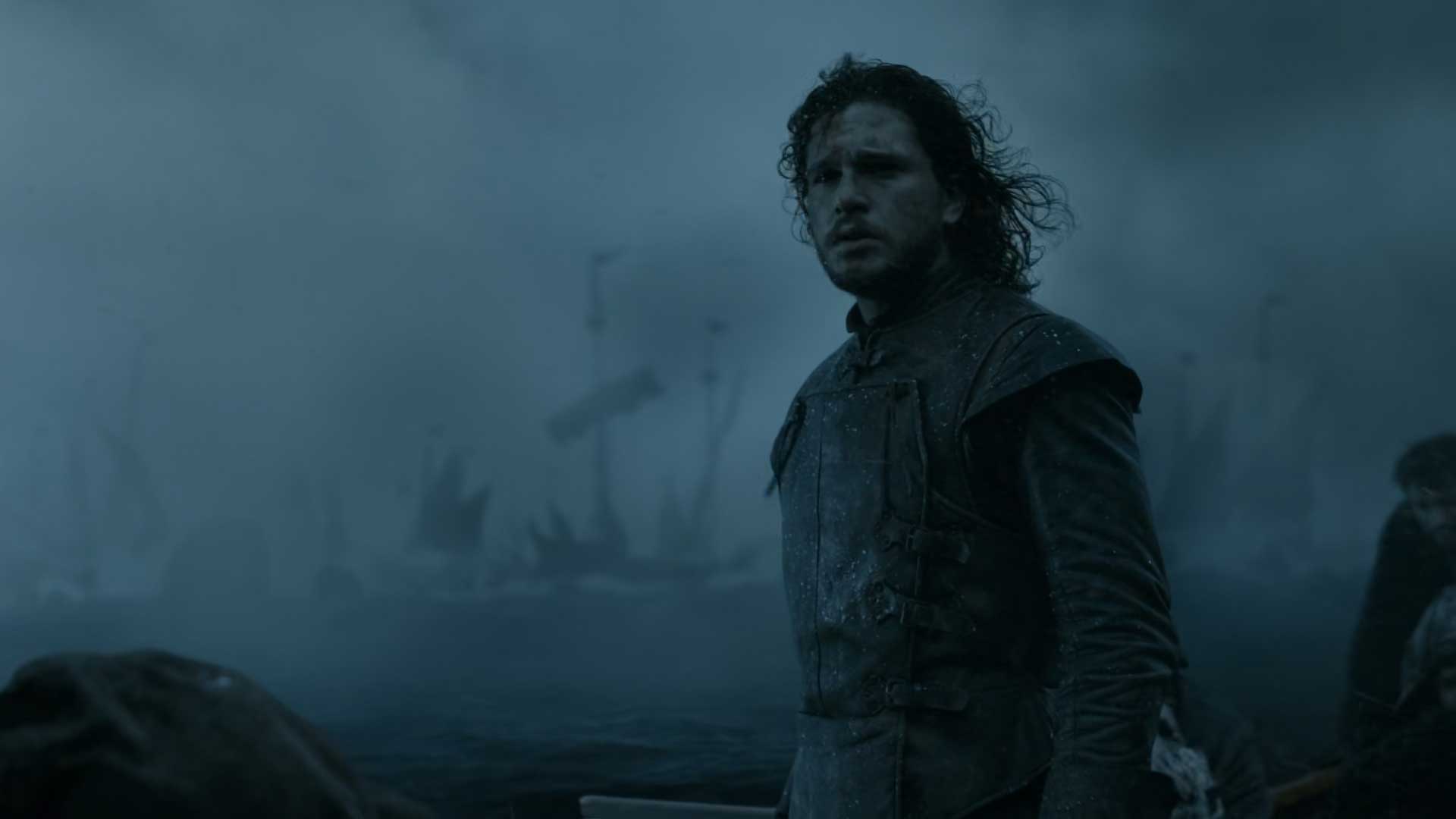In all these years, Game of Thrones has honed its craft at immersing us in a rich, textured world laden with flawed but fully formed three-dimensional characters, ever-expanding locations and a sprawling story that looks like it’ll never end. The narrative continuously diverges in scope and stretches the limits of what can be filmed in a cinematic medium. And every time we wonder whether the show has narrowed and locked down its cast of characters, more are thrown into the mix in good measure. There’s however only so long you can keep branching out before the central conflict threatens to either collapse upon itself or get lost in the wilderness beyond the wall.
Season 5 shows the beginnings of the showrunners’ struggles adapting George R. R. Martin’s ambitious, unwavering saga. Writers David Benioff and D. B. Weiss exercise restraint when it comes to pulling material from the fourth and fifth novels, A Feast For Crows and A Dance With Dragons, combining characters, omitting plot threads and doing away with entire chapters and characters for the sake of keeping the momentum alive. A visible side-effect of this choice is a noticeable change in pace of the show’s story. Developments occur at a much faster pace, narratives feel sped up and the characters end up being able to travel absurd distances in what looks like a matter of minutes, even though it’s not. As a consequence, each episode ends up achieving a lot more than episodes in prior seasons and even though Season 5 doesn’t quite have as many of those jaw-dropping moments as the first four seasons had, a lot happens in pretty much every hour gone by.
One of the more pleasing plot developments is the union of strong characters from different parts of the dual-continent world. Opening with the fallout of Tywin Lannister’s death at the hands of his son Tyrion, the early episodes set Tyrion up to be motivated by Varys into supporting the right kind of leader. That, in the eyes of the sharp eunuch happens to be Daenerys Targaryen. The wheels are set in motion and Tyrion journeys through Volantis and Valyria (or what’s left of it) before landing in the fighting pits of Meereen where he comes face to face with Daenerys. The writers go as far as to create some original material showing the interactions between the two resulting in some of the best dialogue-work to come out of the season in general. In retrospective, it isn’t really surprise though considering the delightful interactions they wrote between Arya and Tywin in Season 2, but it’s a good reminder that showrunners David Benioff and D. B. Weiss are not slavish to George R. R. Martin’s work and are capable of moulding it to suit the TV Show’s structure without disastrous results. For us viewers, that means an insanely high-octane rush seeing two wholly complete characters spar words with each other. It’s the primary reason behind the immense success of Marvel’s crossovers.

The Season parallels to a certain extent, the journeys of Daenerys Targaryen, Stannis Baratheon and Jon Snow as they each rule their respective kingdoms as queen / king. In their rule they sometimes make tough calls, rash decisions and pull off hard executions that have domino repercussions that are felt in the subsequent episodes. Daenerys executes a rebel who killed a member of the Sons of the Harpy before he had a chance at fair trial. Whether or not he’s deserving of one is something different characters debate over and the Meereen slaves weigh in by retaliating to the decision by pelting stones and possibly inspiring more rebels. Daenerys also struggles to contain her dragons after she alienates at least two of them by chaining them in the dungeons; she has to consider (or reconsider) the Mother of Dragons moniker that she so often spouts.
In the stead of characters crossing over, we have Stannis intersecting paths with Jon. Both “honorable” men, declaring themselves kings in their respective lands, they’re confronted with difficult times but carry ahead regardless of the consequences, with the belief that what they’re doing may seem wrong on the surface but will have ripple effects that will crown them and ultimately justify those actions. Some of those decisions are taken with immense guilt, regret and disappointment with mortifying consequences. Of course they do have ripple effects, and big ones too and at least one of those outcomes became the subject of a year-long debate hyping Game of Thrones to disproportionate levels until Season 6 premiered.
In fact, one of the echoing themes of Season 5 is that things get worse, infinitely worse for many of the characters involved. This is probably the only season in the show that doesn’t end with a hopeful finale, instead choosing to finish with one of the most depressing episodes the series has ever seen, merely in terms of the amount of characters who suffer. And this is a show that has given you Baelor, The Red Wedding and The Purple Wedding under three different episodes; it’s saying something when a finale is so depressing you feel sorry for Cersei Lannister and wish to weep at the fate of many, many characters. There are characters like Sansa and Theon who do manage to end their storylines on a glimmer of hope but not before the duo are subjected to rape and torture respectively at the hands of the cruel Ramsay Bolton.
Season 5 also introduced the much awaited Dorne and the hugely hyped Sand Snakes, although neither of them lived up to the unrealistic expectations that fans had built up from them. In fact the Dorne storyline is often one of the more unanimous criticisms that the season has received and as a Season, the show was pretty much mired in controversy and attracted the most disturbing news through its entire run thus far. First, there was the issue of the first four episodes being leaked which, as the figures have suggested, indicate a drop in viewer ratings. Then there was the Dorne storyline which I just mentioned that played out in a hugely unsatisfying manner, to the point of underutilizing a veteran like Alexander Siddig and being declared outright bad. And finally, Sansa’s “rape” at the hands of Ramsay widely disturbed viewers who went on about how it negated Sansa’s built up towards a stronger characterization until that point, with the rape shifting the focus from her journey of strength to Theon’s path towards redemption.

A focal point of this season was the introduction of the Faith of the Seven and its worshippers, lead by the religiously devout High Sparrow. In a show where everyone’s loyalty can be bought, the Sparrow is uncorruptible and is solely interested in meting out justice to those who disobey the Laws of the Seven, though there’s clearly more than meets the eye here. Among these are illicit relationships and lying under oath which consume Lancel Lannister as well as Margaery and Loras Tyrell. Of course Cersei digs her own grave by arming the Faith Militant when the Sparrow comes after her for her own incestous relations and that’s a plot development that the show builds to gradually from the beginning, concluding with her walk of atonement.
It’s also interesting to watch how much Petyr Baelish controls, or is at least responsible for the goings-on in Game of Thrones. Between goading his lover’s sister Lysa Arryn to poison her husband Jon Arryn, which essentially kicked off the entire storyline in Season 1, to being responsible for the death of King Joffrey Baratheon, Baelish is playing a slow chess match, positioning the pieces to execute whatever maneuver he wishes. And Arya Stark is playing a much simpler, yet equally more dangerous game as she learns to become a ruthless killer, assassin from Jaqen H’gar, further introducing us into the legend of the Faceless Men. This puts her at a completely different track from her sister – both sisters are suffering at this point but Arya is simultaneously empowering herself to become a ruthless assassin. As we know now, all this leads to some hugely satisfying payoffs in the seasons to come.
Game of Thrones undergoes a minor shift behind the scenes in Season 5 by essentially letting directors handle mini-movies. They accomplish this by (mostly) having directors be responsible for two consecutive episodes. In the process, the show brings back some old favorites like David Nutter while also introducing newer faces like Miguel Sapochnik, who takes on Neil Marshall’s role as the one to deliver battle heavy episodes. His arrival results in the show’s most technically accomplished episode to date in Hardhome whose final 30 minutes keep you on the edge of your seat, even if you’ve already viewed the episode multiple times. Again, showrunners Benioff and Weiss dole out original material by fleshing out a battle merely hinted at in the books. By doing so, they’re able to give us a real sense of the White Walker threat and why exactly is it a threat, which serves to add more weight to future discussions with Jon Snow, the Night’s Watch and everyone else on this topic. Fabian Wagner’s cinematography that shifts from handheld to dolly as the shot commands, Djawadi’s epic score (just love that build-up theme that kicks off the fight in question) and Tim Porter’s editing are used to great effect by Sapochnik who delivers what many consider a 10 out of 10 episode in the series, even overshadowing the traditional 9th episode.

David Nutter then takes over the herculean task of finishing up the series and, having directed The Rains of Castamere, is the proverbial expert at delivering troubling episodes (one should be very worried given that he’s directing three episodes in Season 8). Sure we get some swooping shots in the adequately book-named chapter The Dance of Dragons but the finale just shatters the hardest of the show’s cynics and leaves you shell-shocked, empty and mesmerized at the quality of direction, frequently questioning how on earth did they pull this off. Technical flourishes have been in full effect on the show and it goes without saying that Thrones does not disappoint one bit in Season 5. The cinematography alone is so outstanding it gave me a hard time choosing a cover image for the show.
The Dorne subplot is really the only thing that dragged this season down, making it thus one of the show’s weakest. But cast that aside and you have what is possible the strongest direction seen in the show’s history thus far. Season 5 takes quite a while to get started, building up tortorously in its first few episodes but even those are filled with big concluding moments. Season 5 is also our first hint at the writers wanting to converge the story to some extent, as is evident by the end when the biggest claimants to the War for the Iron Throne meet an unlikely (at the time ambiguous) fate. With the queen-regent broken, the kings wiped out and the books all covered, the season left Game of Thrones in a very precarious state, all while bringing together the entire world into theorizing the fate of a beloved bastard.
Game of Thrones Season 5 Rating: 9.0 out of 10.0
In this For The Throne retrospective series, we take a look back at all seasons of George R. R. Martin’s hit fantasy show Game of Thrones, uncovering new insights, identifying connections and spotting plot points and teases that go on to play an important role in the final season. These posts are littered with spoiler so exercise caution when reading.





